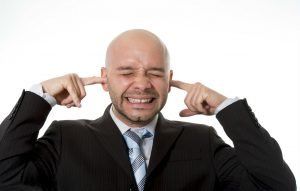The Growing Problem of Counterfeit Goods
The production and sale of counterfeit goods have become a burgeoning industry, causing significant harm to both consumers and legitimate businesses. Counterfeit goods refer to products that imitate the design, packaging, and trademarks of authentic brands, misleading consumers into believing that they are purchasing genuine items. These fraudulent products not only pose a threat to public health and safety but also result in substantial economic losses for companies and governments alike.
Regulatory Framework to Tackle Counterfeit Goods
In order to address this growing menace, governments around the world have been enacting stringent laws and implementing comprehensive regulatory frameworks to combat counterfeit goods. These efforts aim to protect consumers, preserve the integrity of legitimate brands, and ensure a level playing field for businesses. Visit this external resource to get additional information on the topic. Access this informative study, immerse yourself further in the subject.
1. Strengthened Intellectual Property Rights (IPR)
One of the primary measures taken by governments is the strengthening of Intellectual Property Rights (IPR) laws. These laws grant exclusive rights to the creators of innovative products, providing them with legal protection against imitation and infringement. By enhancing these laws, governments can deter counterfeiters from manufacturing and selling fraudulent goods.
2. International Cooperation and Collaboration
Counterfeit goods often traverse national borders, making it essential for governments to collaborate on a global scale to combat this issue effectively. International organizations, such as Interpol and the World Customs Organization (WCO), play a crucial role in facilitating information sharing, coordinating efforts, and providing training and resources to member countries.
3. Robust Inspection and Monitoring Mechanisms
To detect and confiscate counterfeit goods, governments have established robust inspection and monitoring mechanisms at ports of entry, such as airports and seaports. These mechanisms involve the use of advanced technologies, such as X-ray machines and scanner systems, to identify suspicious shipments and verify the authenticity of products.
4. Public Awareness and Education
Public awareness campaigns and educational initiatives are crucial in the fight against counterfeit goods. Governments collaborate with industry associations, non-profit organizations, and media outlets to disseminate information about the risks associated with counterfeit products. These campaigns aim to empower consumers to make informed purchasing decisions and recognize the signs of counterfeit goods.
Cracking Down on Online Counterfeit Sales
In recent years, the rise of e-commerce platforms has provided counterfeiters with new avenues to sell their fraudulent products. To address this challenge, governments are increasingly focusing on regulating online marketplaces and holding them accountable for monitoring and removing counterfeit listings.
1. E-commerce Platforms’ Responsibility
Many governments have adopted legislation or encouraged self-regulation of e-commerce platforms to ensure they take responsibility for eliminating counterfeit listings. By imposing liability on these platforms, governments can incentivize them to implement stricter regulations and proactively remove counterfeit products from their websites.
2. Collaborative Efforts with Online Marketplaces
In addition to regulatory measures, governments have engaged in collaborative efforts with major online marketplaces to combat the sale of counterfeit goods. These partnerships include information sharing, joint investigations, and the development of advanced algorithms and machine learning technologies to identify and remove counterfeit listings in real-time. We’re always working to provide a comprehensive educational experience. That’s why we recommend this external resource with additional information about the subject. https://bestwondercloset.com, immerse yourself further in the subject!
Conclusion
Counterfeit goods pose a significant challenge to governments, businesses, and consumers. However, through strengthened regulatory frameworks, international cooperation, robust inspection mechanisms, and crackdowns on online counterfeit sales, governments are making strides in combating this pervasive issue. By working together, governments can protect the rights of consumers, safeguard legitimate businesses, and ensure a fair and transparent marketplace.
Obtain more information in the related posts we’ve gathered for you. Happy researching:



